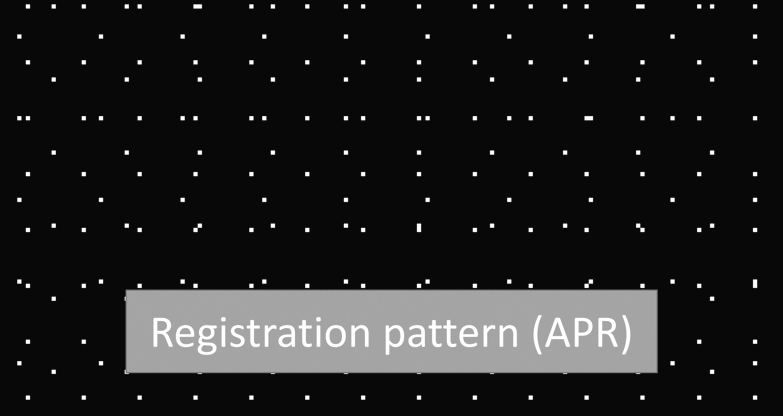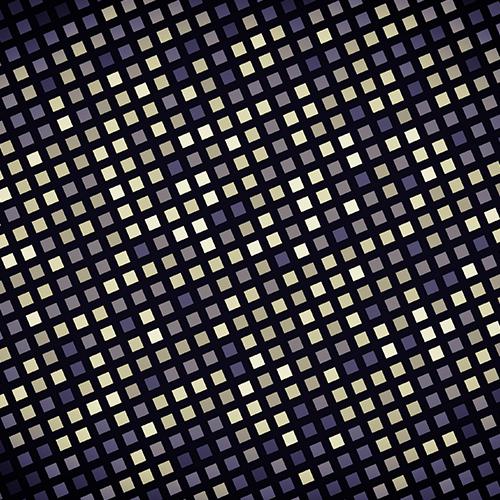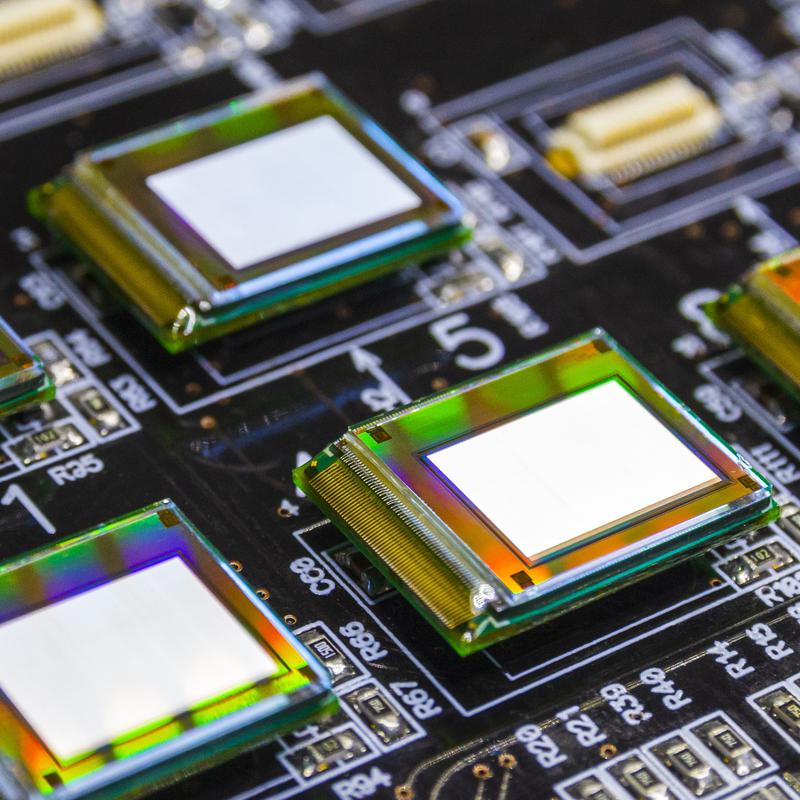LMK DeMURA - Präzise Korrektur von Displayunregelmäßigkeiten und Pixel Registrierung
Moderne Single-Pixel-Emitter-Displays wieOLED, microLED und LED leiden häufig unter produktionsbedingten Abweichungen. Die Leuchtdichte und Farbart können lokal von Pixel zu Pixel variieren, was zu einer wahrnehmbaren nieder- und hochfrequenten Ungleichmäßigkeit führt. Diese Abweichungen beeinträchtigen die visuelle Qualität und Konsistenz, sodass eine präzise Korrektur sowohl in der Forschung und Entwicklung als auch in der Produktion unerlässlich ist.
Erweiterte Pixelregistrierung für präzise Kartierung
LMK DeMURA verwendet die erweiterte Pixelregistrierung (APR), um gemessene Luminanzwerte dem richtigen Pixelindex zuzuordnen. Im Gegensatz zu herkömmlichen Methoden, bei denen benachbarte Pixel ausgeschaltet werden und mehrere Aufnahmen erforderlich sind, verwendet APR ein dichtes geometrisches Registrierungsmuster (Punktwolke), das Display- und Linsenfehler von Natur aus berücksichtigt.
APR ermöglicht:
- Nur eine Bildaufnahme pro Graustufe/Farbkanal
- Schnellere Messzyklen und höherer Durchsatz
- Reduzierter Aufwand bei Testaufbauten
Single Shot Pixel Registration (SPR) für schnellere Produktionen
Unter geeigneten Bedingungen ermöglicht SPR (Single Shot Pixel Registration) eine einmalige Registrierung, gefolgt von einer schnellen Zuordnung über mehrere Geräte hinweg. SPR eignet sich für Produktionslinien, bei denen die Zykluszeit pro Einheit minimal sein muss.
Unterstützte Displays und Applikationen
LMK DeMURA ist für folgende Anwendungen geeignet:
- OLED, microLED, und LED-Panels
- Leicht gekrümmte, Freiform und flache Displays
- Forschungslabore und Pilotproduktionslinien
- MicroDisplays
Integration & Workflow im Labor und in der Produktion
Unser LMK DeMURA ist als eigenständige Software erhältlich. Es kann im GUI-Modus (für den Laboreinsatz) oder im TCP/IP-Modus (für die Integration in Produktionslinien) betrieben werden. Es lässt sich nahtlos in die LMK LabSoft integrieren.
Vorteile von LMK DeMURA
- Pixelgenaue Korrektur von Ungleichmäßigkeiten bei Leuchtdichte und Farbart
- Schnellere Arbeitsabläufe: reduzierte Anzahl von Aufnahmen pro Messung
- Effektive Moiré-Unterdrückung durch Phasenkompensation
- Lösungen mit hohem Durchsatz für Massenproduktionslinien
- Zuverlässigkeit: APR sorgt für robuste Abbildung unter realen Bedingungen
- Nahtlose Integration mit LMK-Kameras, Optiken und Softwaremodulen
- Skalierbar vom Laboreinsatz bis zur automatisierten Produktionsprüfung
RELEVANTE PRODUKTE UND APPLIKATIONEN
Publikationen
International Conference on Display Technology (ICDT 2024)
International Conference on Display Technology (ICDT 2023)
International Meeting on Information Display (IMID 2022)
To ensure a correct pixel registration (assigning the luminance to the correct pixel) in state of the art methods, display pixels are partially switched off [Patent US9135851B2]. However, this reduces cycle time and changes the average pixel level, which can affect the results.
We present a method to overcome these issues, called Advanced Pixel Registration (APR). It is based on a specific registration pattern applied during a teach-in process. An example pattern is provided in Figure 1 (left). After this initial registration, DeMURA measurements can be performed with only one image capture per input signal. The same is true for following displays during EOL testing, as small misalignments, which occur in production control environments as slight shifts, inclinations or rotations of the DUT (see Figure 2) can be corrected automatically.
This contribution validates the APR method using a flat and free-form curved display with methods similar to [] Feng, X. (2019), 78-2: Measurement and Evaluation of Subpixel Brightness for Demura. SID Symposium Digest of Technical Papers, 50: 1122-1125.]. The results show that the APR method can significantly improve the efficiency of DeMURA processes required for high-quality LED, OLED and MicroLED displays, regardless of their shape.
Society for Information Display 2022
International Conference on Display Technology (ICDT 2021)
- Typ:
- Software
- Anwendungen:
- Display
- Messgröße:
- Farbmessung Lichtmessung
- Aufgaben:
- Automation & Industrie Entwicklung & Industrie Wissenschaft & Forschung



